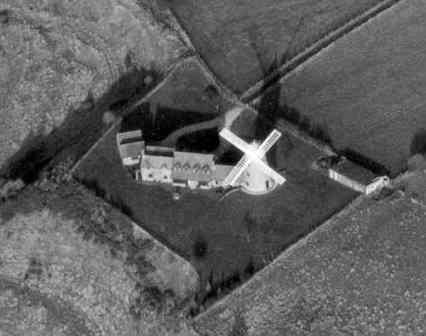Imperial Napton
The census, which began in Napton in 1851, allows us to look at what type of jobs people were doing. By looking at the later censuses, we can see how jobs changed over the following fifty years. As Napton is a rural town, many jobs were agricultural, such as farm labour. The industrial revolution created more jobs for people, such as working on the canal or producing goods from the nearby brickworks or the windmill. It is thought that the canal and windmill were the most important features of Napton at this time. However, as well as industrial and agricultural jobs, a number of people worked as scholars.
The windmill, originally built in the 15th century, was later converted into a steam mill. It produced raw material, which was transported out of Napton and later used for textile goods. This created jobs for people, such as shirt and dressmakers, which begin to appear in the census from 1861.

Aerial photograph of Napton Windmill
The canal, which stretches from Oxford to Birmingham, is believed to have been an important route for transporting goods out of and through Napton. It features a wharf which would have been used to load and unload products, and a winding hole which allowed the boats to turn around. A pump was used to control the water levels of the canal whilst the boats were travelling, which would have been located in a pump house, which would have been another type of job available at this time.

Photograph showing the canal and towpath
A tramway, which is marked on the 1886 Ordinance Survey map, was also used to transport goods. Further evidence to suggest that goods were moved in and out of Napton is a toll road between Warwick and Northampton, which passed through Southam.
Napton also contained a brick producing industry which was active from the late 1800's until the 1970's. The bricks would have been made using a coal fired kiln and exported out of Napton or used for local building work.

Napton Brickworks
During this time a quarry was used to extract stones for road repairs. This is marked on the Enclosure map of 1779, which shows that it was one of the older industries in Napton.

Napton Quarry

